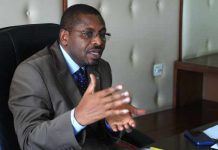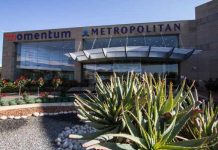y-mail.co.zm” class=”f”>Zambia Daily Mail by Online Editor on 6/24/13
Zambia Railways set to become high profit earner
 By ENOCK MUKOSHA
By ENOCK MUKOSHA
THE Zambia Railways Limited (ZRL) network that we know today was built during the British rule.
The purpose was to access the vast mineral deposits of Central Africa. The company that started the now ZRL was called Rhodesian Railways which linked Northern Rhodesia (Zambia) to Southern Rhodesia (Zimbabwe).
The railway arrived in our country in 1905 when the 150-kilometre Livingstone-Kalomo line of was built before the Victoria Falls-Livingstone Bridge was completed in September of the same year.
The first wagon was driven by oxen while the first locomotive was pieced together at the gorge across the bridge so as to start the first line of operation to Kalomo.
So how did Zambia Railways get begotten? The railways from Kalomo reached Broken Hill (now Kabwe) in 1906 and Ndola up to Sakania in the Democratic Republic of Congo in 1909.
During the Unilateral Declaration of Independence (UDI) crisis, the Rhodesian Railways split in mid1960 and Zambia Railways came into being.
In February 2003, the Railways System of Zambia, a private company incorporated and registered in Zambia as a consortium, participated in the concession tender and won the bid.
But because of deteriorating operations of the freight railways consortium, the consortium was cancelled in November 2012 and ZRL resumed operations
But the problems ZRL inherited are so daunting that it had to call for the recruiting of the United Kingdom-based professor of automotive and aerospace structures Clive Chirwa.
President Sata appointed Professor Chirwa to head and help the government resuscitate the ailing company.
The professor impressed the audience in his Akapelwa lecture at the Government Complex in Lusaka when he showed images of the new network on his computer.
The images depicted the design of the electric powered train and the underground Lusaka train station.
It appears the 927-kilometre Livingstone-Chingola dual railway carriageway that existed in the mind, if not in the heart of this renowned professor appeared too good to be true.
He stressed that the US$1.5 billion project would harness lots of Zesco Limited power.
But looking at the current number of power outages, it appeared the whole country would black out just to run this railway network.
Professor Chirwa was not one to be discouraged by doubting Thomases. He said the electric train would be commercially viable and self-sustaining.
With the premature retirement of Professor Chirwa and the dissolution of the ZRL board of directors amid allegations of corruptionand abuse of authority of office, President Sata appointed Dr Muyenga Atanga, permanent secretary in the Ministry of W orks, Supply, Transport and Communications as acting managing director of the company.
With the resumption of the passenger train from Livingstone to Kitwe, plus the signing of the agreement with giant mining companies like Konkola Copper Mines (KCM) to trasport the copper and other mine products, ZRL is set to become a high profit making company once again.
But I am making a humble suggestion to the current managing director.
This company is close to my heart because other than having helped me in terms of affordable transport when I was receiving academic education in Livingstone at Hillcrest National Technical High School, I hope, as any other patriotic citizen would wish, that this company becomes one of the country’s major employers.
There is need to set up an agency that could be mandated with the oversight role and that of ensuring the railway system is fully back to life.
Just as the road network is now under the Road Development Agency (RDA) the government should come up with the ZR-TAZARA agency that can offer technical and managerial oversight to ZRL.
This agency may be called Railway Networks of Zambia (RNZ) and can oversee the entire railway network and operations country-wide and beyond.
The author is a Choma-based observer of Zambia’s development processes.

 JOIN DRIVERN TAXI AS PARTNER DRIVER TODAY!
JOIN DRIVERN TAXI AS PARTNER DRIVER TODAY!











